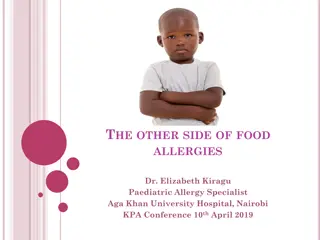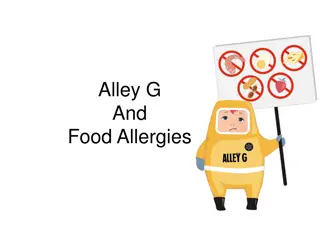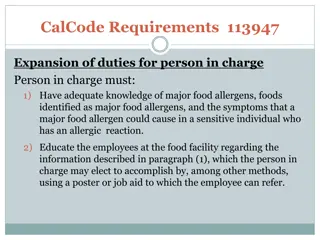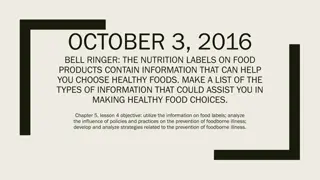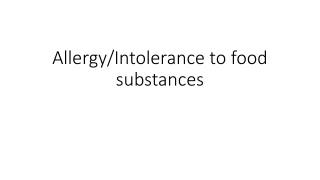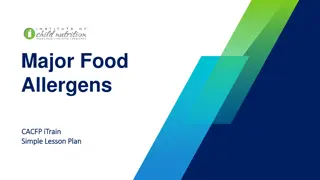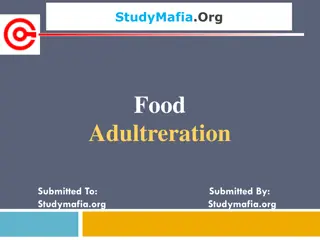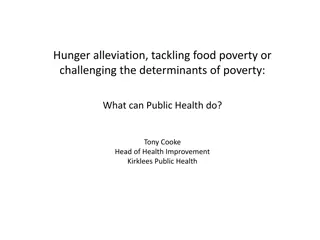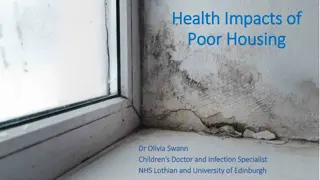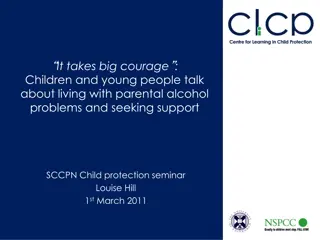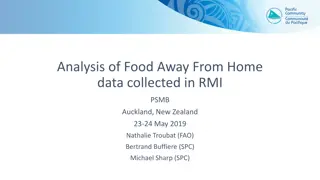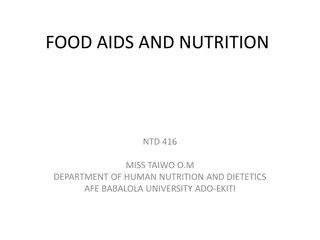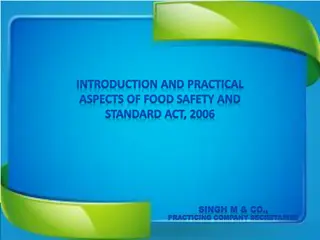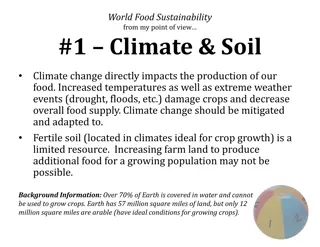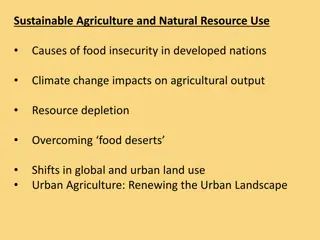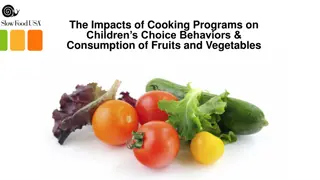Understanding Food Allergies in Children
Food allergies in children can be IgE-mediated or non-IgE-mediated reactions, with common allergens including fish, eggs, peanuts, and more. The prevalence of food allergies in Europe and North America ranges from 6% to 8% in children up to 3 years old. Symptoms may vary from immediate reactions like rashes and anaphylaxis to delayed reactions such as eczema and reflux. Proper history-taking and diagnostic tests are crucial for accurate diagnosis and treatment, which may involve exclusion diets and allergen-specific advice.
Download Presentation

Please find below an Image/Link to download the presentation.
The content on the website is provided AS IS for your information and personal use only. It may not be sold, licensed, or shared on other websites without obtaining consent from the author. Download presentation by click this link. If you encounter any issues during the download, it is possible that the publisher has removed the file from their server.
E N D
Presentation Transcript
Food Allergies in Children Dr C Macaulay Dr C Lemer Dr R Bhatt
Background Food allergy may be confused with food intolerance Food allergy can be classified into IgE-mediated and non-IgE-mediated reactions. IgE-mediated reactions are acute and frequently have a rapid onset. Non-IgE-mediated food allergy is frequently delayed in onset. Most common foods causing allergies fish hens' eggs kiwi fruit peanuts and tree nuts sesame shellfish soy wheat.
Epidemiology The prevalence of food allergy in Europe and North America has been reported to range from 6% to 8% in children up to the age of 3 years. Only 25 40% of self-reported food allergy is confirmed as true clinical food allergy by an oral food challenge
Focused history A personal or family history of atopy is the most significant predictor of allergy. Ask about history of the reaction Timing likely precipitants. Include history of eczema, asthma, Gastroesophageal reflux Note that the absence of signs or symptoms does not exclude a food allergy
Immediate reactions -IgE mediated Occur within 2 hours of contact or ingestion Symptoms are consistent and reproducible and include rashes, itching, wheeze, GI symptoms, angioedema and anaphylaxis Skin prick tests (or blood tests for specific IgE antibodies to allergens/likely co- allergens) can help diagnosis
Treatment in IgE Mediated Exclusion Should have dietician advice Should have an EpiPen if history of anahylaxis or have food allergy and asthma
Delayed reactions Non IgE mediated Occur > 2hrs after ingestion but within 2- 3 days Often difficult to reproduce and symptoms less specific May present: eczema, colic, reflux, loose stools, constipation, food aversion No tests help diagnosis
Treatment Non IgE mediated Treatment is 2- 6 week trial of exclusion of the suspected food followed by reintroduction If cows milk protein allergy suspected see GOR guideline
When to refer has had an anaphylactic reaction had one or more severe delayed reactions has immediate or delayed allergic reactions to multiple allergens or food groups, especially if there is faltering growth has had acute allergic reaction with coexisting asthma moderate severe eczema where cross reactive or multiple food allergies suspected has not responded to a single allergen elimination diet Or: There is strong clinical suspicion of Ig E- mediated food allergy but allergy test results are negative
Top Tips All children who are excluding multiple foods should be referred to a paediatric dietician Most cases of urticaria lasting over several days are associated with a viral infection and do not represent a food allergy Do not use serum- specific IgE testing to diagnose delayed food allergy Allergy UK : www.allergyuk.org/ has excellent advice sheets for families and clinicians
Resources https://www.nice.org.uk/guidance/cg116 Cows milk protein allergy: http://cowsmilkallergyguidelines.co.uk/interacti ve-algorithm/ https://www.allergyuk.org/childhood-food- allergy/food-allergy-in-babies-and-children


